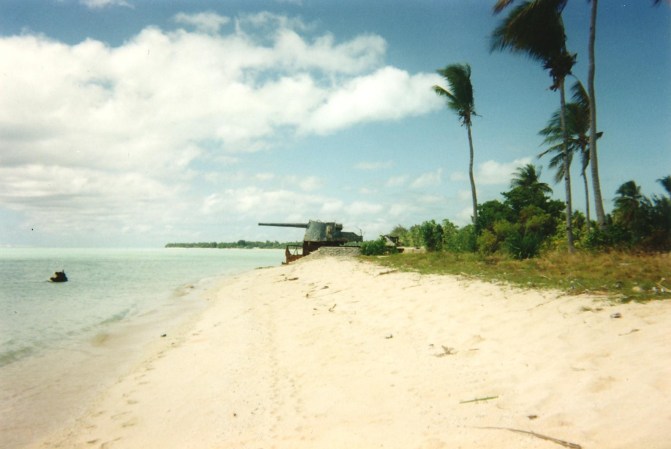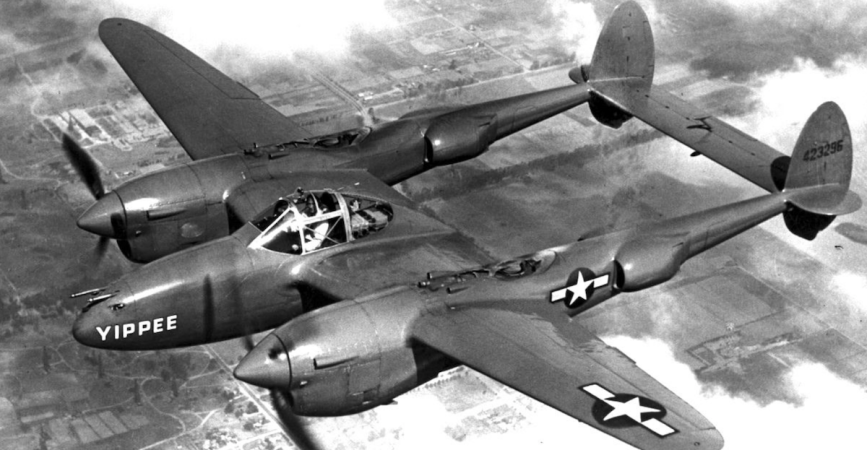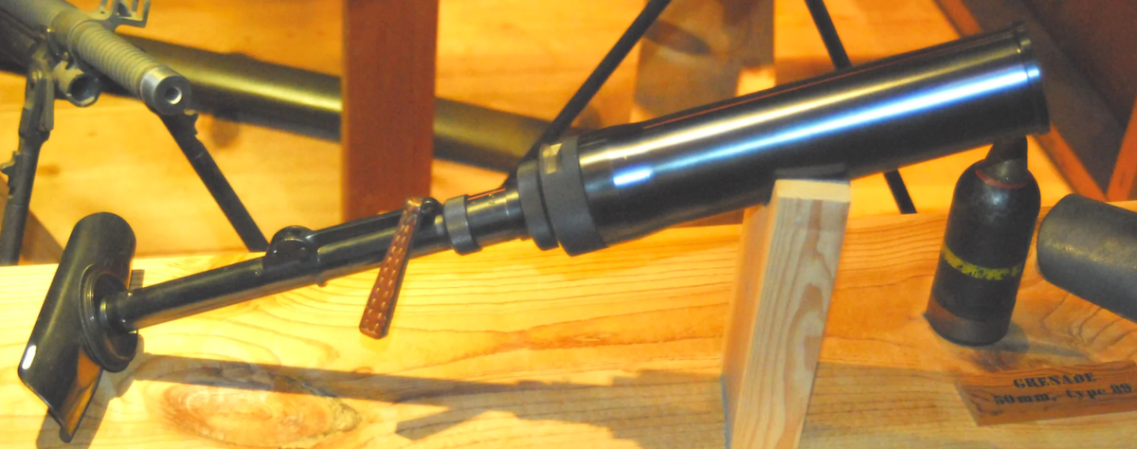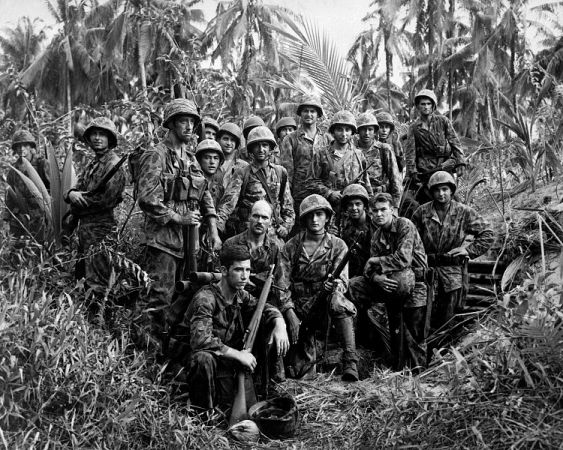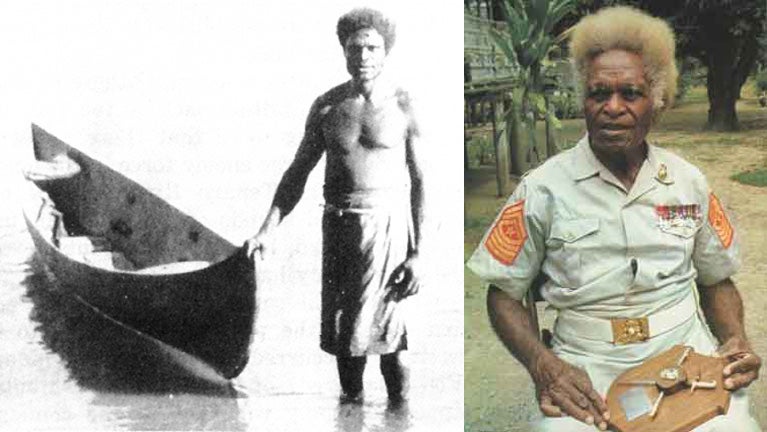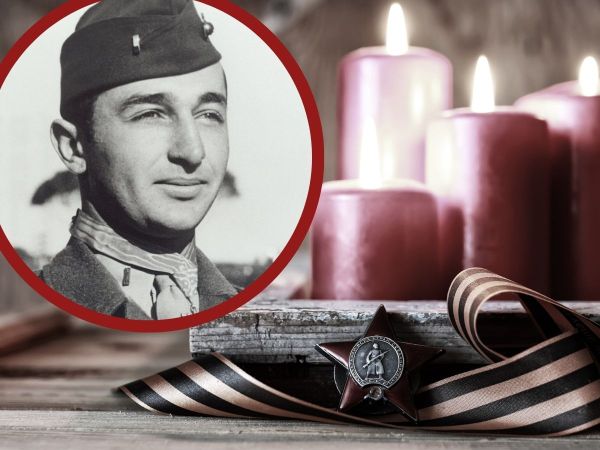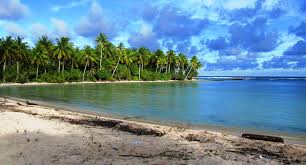By October 1942, American Marines and the Japanese were fighting a vicious battle around Henderson Field on Guadalcanal. Marines held a perimeter around Lunga Point while the Japanese controlled the remainder of the island.
The Marines guarding the perimeter mostly consisted of those from the 1st Marine Division. Holding a small ridge along the Lunga River, known as Lunga Ridge, were Marines from the 1st Raider Battalion and the 1st Parachute Battalion.
Those Marines were led by the indomitable Lt. Col Merritt “Red Mike” Edson, commanding officer of the 1st Raider Battalion. Edson was already on his way to becoming a legend having earned two Navy Crosses during his career. He would cement his status on Guadalcanal.
The fact that the Marines were even in place to meet the Japanese was due to Edson’s foresight. Edson, along with Col. Gerald Thomas – Vandegrift’s operations officer, believed that the Japanese were likely to attack at Lunga Ridge. However, Vandegrift believed the attack would come from another area and would not approve the placement of Marines along the ridge. Thomas finally convinced him it would be a good place for Edson’s Raiders to rest, thus plugging a significant gap in the line.

On the night of September 12, 1942, after trudging through Guadalcanal’s thick jungles, Japanese troops, preceded by an artillery barrage, emerged from the jungle and engaged the Marines on the ridge. However, the Japanese attack was somewhat premature as many other units had failed to reach their jump-off points for the attack.
After some skirmishing and an attack that drove the Marines back, most of the Japanese withdrew to regroup for an attack the next night.
Edson’s men made what preparations they could to improve their defenses.
Unbeknownst to them, they were outnumbered by over three to one.
That afternoon, as darkness approached, Edson stepped up onto a grenade box to address his men:
You men have done a great job so far, but I have one more thing to ask of you. We have to hold out just one more night. I know we have been without sleep a long time, but I expect another attack and I believe they will come through here. If we hold, I have every reason to believe we will be relieved in the morning.
Just after dark on Sept. 13, the Japanese surged out of the jungle into the Marine positions on Lunga Ridge.
A Japanese attack on the right flank dislodged the Marine Raiders of Company B from their hilltop position.
Almost simultaneously, another Japanese assault drove back the Marines of Company B, 1st Parachute Battalion. In the face of the Japanese onslaught, Edson ordered the two companies to fall back towards his command post on Hill 123 in the center of the ridge.
A third Japanese assault slammed into the Marines of C Company, 1st Parachute Battalion, which sent them reeling. With three companies in the midst of falling back, confusion and fear began to take hold. The situation was heading towards a rout for the Marines when Edson appeared with several officers from his staff and, with forceful language and spirit, turned the Marines around to face the Japanese.
Meanwhile, the remaining Raider companies were desperately holding the line against the Japanese.

Over 2,500 Japanese were facing just over 800 Marines. Wave after wave came on.
Edson sent the reinvigorated Paramarines against the exposed left flank with fixed bayonets. They caught the surging Japanese by surprise just as they were preparing to roll up the Marines’ flank and drove them off the hill.
Still, the Japanese attacks continued.
Marine artillery fire pummeled the area in front of the Marines’ positions, inflicting heavy casualties on the Japanese.
Those that survived were met with heavy fire from the Marine defenders on the ridge. When this was not enough, the Marines fought off their attackers in hand-to-hand combat in the pitch-black night.
As each successive wave was mowed down, another formed to take its place.
Eventually, the beleaguered Raiders and Paramarines were joined by the 2nd Battalion, 5th Marine Regiment who helped to repulse the final two Japanese assaults before dawn.
The final Japanese positions on Lunga Ridge were destroyed by U.S. Army Air Corps AiraCobras early that morning. What remained of the Japanese assault force retreated into the jungle and away from Lunga Ridge.

The terrific fighting on Lunga Ridge came to be known to many as the Battle of Bloody Ridge. But for the Raiders and Paramarines that fought there, it was known as Edson’s Ridge.
Throughout the battle, Edson was never more than a few meters from the front lines. And, according to the account of one Marine officer, he boldly stood in his position while most of them hugged the ground. Edson was awarded the Medal of Honor for his leadership during the battle.
The tenacity of the Marines in holding their position saved Henderson Field and, with it, the American effort on Guadalcanal. Had the Japanese broken through, it is likely they could have driven the Marines from the island. The Japanese losses in the battle were difficult to replace.
The result of the battle likely had a large impact on the overall Japanese strategy in the Pacific, as resources were diverted to Guadalcanal that were needed elsewhere. And for the Americans, it was the closest they came to losing their toehold in the Pacific.




